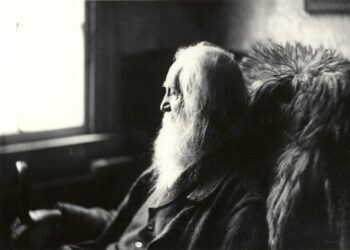Introduction:
At The Sea-Side Summary By Robert Louis Stevenson Robert Louis Stevenson (1850-1894) was a Scottish author widely recognized for his poetry and novels. Known for works such as Treasure Island and The Strange Case of Dr. Jekyll and Mr. Hyde, Stevenson also produced numerous poems that captured a wide range of emotions, experiences, and observations of the world. At the Sea-Side is one of Stevenson’s early poems, a delightful, evocative piece that reflects his deep appreciation for nature, particularly the ocean and the life around it.
In this poem, Stevenson takes the reader to the shore of the sea, offering an imaginative and childlike exploration of the physical world. Through the poem, he illustrates the simple pleasures of childhood and invites readers to consider the natural beauty and wonder of the seaside environment. The poem is imbued with vivid imagery, rich metaphors, and a tone of innocence that brings to life the sensations and experiences of a day at the beach.
Summary of “At the Sea-Side”
The poem At the Sea-Side by Robert Louis Stevenson takes the reader on a sensory journey to the shore. The speaker, presumably a child, speaks directly to the reader, offering their impressions and experiences of being at the seaside. The speaker describes the beauty and vastness of the ocean and the activities that take place along the shoreline, including watching the waves and playing in the sand.
In the poem, Stevenson uses simple, clear language to capture the joy of being near the sea and the lively energy of the beach. The poem opens with an invitation to the reader to join the speaker at the shore. The vastness of the sea is described in both literal and metaphorical terms, as something that stretches endlessly across the horizon, embodying both a sense of adventure and mystery.
As the poem progresses, the speaker observes the waves crashing on the shore, with some waves larger than others, and talks about how the children play in the sand. There’s a sense of excitement and joy in their playful interaction with the water and the sand. The speaker also draws attention to the natural wonders found along the shore—seashells, seagulls, and the sea itself.
Through its vivid descriptions, the poem encapsulates the experience of being at the sea, not just as a physical space, but as a place that is filled with wonder, adventure, and the exuberance of childhood. The ocean serves as a metaphor for the boundless curiosity and imaginative spirit that children possess, as they are free to explore, play, and revel in the natural world.
Themes in “At the Sea-Side” by Robert Louis Stevenson
- Innocence and Childhood Joy: One of the central themes in At the Sea-Side is the joy of childhood and the innocence that comes with it. The child in the poem experiences the world through a lens of wonder and curiosity, with the seaside becoming a playground for the imagination. Stevenson’s depiction of the child’s excitement and carefree nature captures the essence of childhood, where simple pleasures like playing in the sand or watching the waves bring endless joy. The poem is a celebration of innocence and unadulterated happiness, exemplified by the child’s uninhibited interaction with nature.
Read more
- Nature as a Source of Wonder: Another prominent theme in the poem is the natural world as a source of fascination and beauty. The ocean, the sand, the seashells, and the seagulls all serve as elements of nature that spark the child’s imagination. The vastness of the sea becomes symbolic of the infinite possibilities that nature holds, inviting both the child and the reader to wonder about the mysteries of the world. The speaker’s childlike observations of the environment, without intellectual analysis or adult concerns, allow readers to re-experience nature through a fresh and untainted perspective.
- The Power and Beauty of the Sea: The sea, in particular, plays a crucial role in the poem. Stevenson portrays it as both a magnificent and awe-inspiring force of nature. The sea’s power is evident in the crashing waves, which are described with vivid energy, yet it also has a gentler side, represented by the quiet sands and the peaceful expanse of water. The speaker marvels at the way the waves come in cycles, some large and others small, symbolizing the duality of nature—its strength and serenity.
- Imagination and Creativity: Throughout the poem, the child’s imagination is at the forefront, especially in their interaction with the elements of the beach. The speaker imbues the ordinary acts of playing with sand and observing waves with a sense of creativity, suggesting that the beach is not just a physical space but a realm where imagination comes to life. The seashells, the water, and even the seagulls are objects of wonder and play, reflecting the boundless creativity children possess when engaging with nature.
- The Passage of Time and Transience: While the poem primarily emphasizes joy and innocence, there is a subtle acknowledgment of the passage of time. The waves that come in and out, the changing tides, and the fleeting nature of childhood itself are reminders that moments of joy are transient. The child may be fully immersed in the present moment, but Stevenson’s poem hints at the fleeting nature of childhood, the inevitable passage of time, and the impermanence of experiences.
Analysis of Literary Devices in “At the Sea-Side”
- Imagery: Stevenson’s use of vivid imagery throughout the poem enhances its sensory appeal, drawing the reader into the experience of being at the sea. He describes the ocean, waves, sand, and seashells in such rich detail that the reader can almost see, feel, and hear them. The imagery of “the white and the gray waves” and “the shining, golden shore” creates a picturesque scene of the beach, enriching the poem with both visual and emotional depth.
- Personification: Stevenson personifies the sea by giving it human-like qualities. The waves are described as coming and going, which adds a rhythmic and cyclical nature to the poem. The sea, in this sense, seems alive, engaging with the world in a way that mirrors the child’s playful spirit. The idea of waves “coming back again” reflects the ongoing relationship between nature and the child’s experience.
Read more
- Rhyme and Meter: The poem follows a simple rhyme scheme, with regular alternation between rhymed lines. This rhyme scheme, coupled with a steady meter, creates a musicality and rhythm that mirrors the motion of the waves themselves. The flow of the lines gives the poem a gentle, easy pace, allowing the reader to feel the calmness and natural flow of life at the seaside.
- Symbolism: The beach, waves, and seashells all carry symbolic meanings in the poem. The sea represents both the power of nature and the unknown mysteries of the world. The seashells can symbolize the small wonders of the natural world that children treasure. Overall, the poem uses the beach as a metaphor for the beauty and joy of childhood and the deep connection between human beings and the natural environment.

Conclusion
At the Sea-Side by Robert Louis Stevenson is a beautiful, reflective poem that evokes the innocence and joy of childhood through vivid descriptions of the natural world. By focusing on the simple pleasures of the beach, Stevenson celebrates the boundless curiosity and imagination that come with being a child. Through the child’s perspective, we are reminded of the wonder and beauty that exist in the natural world and the importance of experiencing life with an open heart and mind.
While the poem revels in the present moment, it also gently hints at the transient nature of time and childhood itself. The sea, ever-changing and cyclical, serves as a poignant reminder that life is both vast and fleeting. Stevenson’s lyrical language, imagery, and rhythmic structure combine to create a timeless piece that continues to resonate with readers of all ages.
Read more
(FAQ)
1. What is the main theme of the poem “At the Sea-Side”?
The primary theme of the poem is the celebration of childhood innocence and the joy found in nature. Through the imagery of the beach, waves, and seashells, Stevenson emphasizes the wonder and imagination that come with experiencing the natural world through a child’s eyes.
2. What role does the sea play in the poem?
The sea serves as both a literal and metaphorical force in the poem. It represents the power and mystery of nature, as well as the cyclical, ever-changing nature of time. The waves’ motion symbolizes the passage of time and the fleeting nature of childhood experiences.
3. How does Stevenson use imagery in the poem?
Stevenson employs rich and vivid imagery throughout the poem to bring the seaside setting to life. Descriptions of the waves, sand, and seashells immerse the reader in the sensory experience of being at the beach, evoking both visual and tactile sensations.
4. What does the child’s perspective reveal in the poem?
The child’s perspective reveals the purity, simplicity, and joy of experiencing the world without adult concerns or worries. Through the child’s eyes, we are reminded of the magic and wonder that exist in nature and the boundless creativity children bring to their interactions with the world.
5. How does the poem convey the passage of time?
While primarily focusing on the joys of childhood, the poem subtly conveys the passage of time through the cyclical nature of the waves and the transience of the experiences described. The waves’ coming and going mirror the fleeting nature of childhood moments.
Read more




